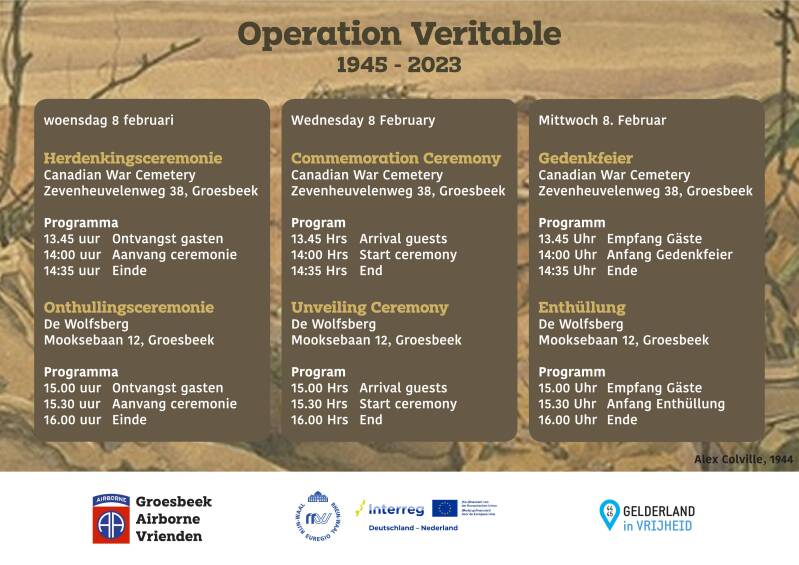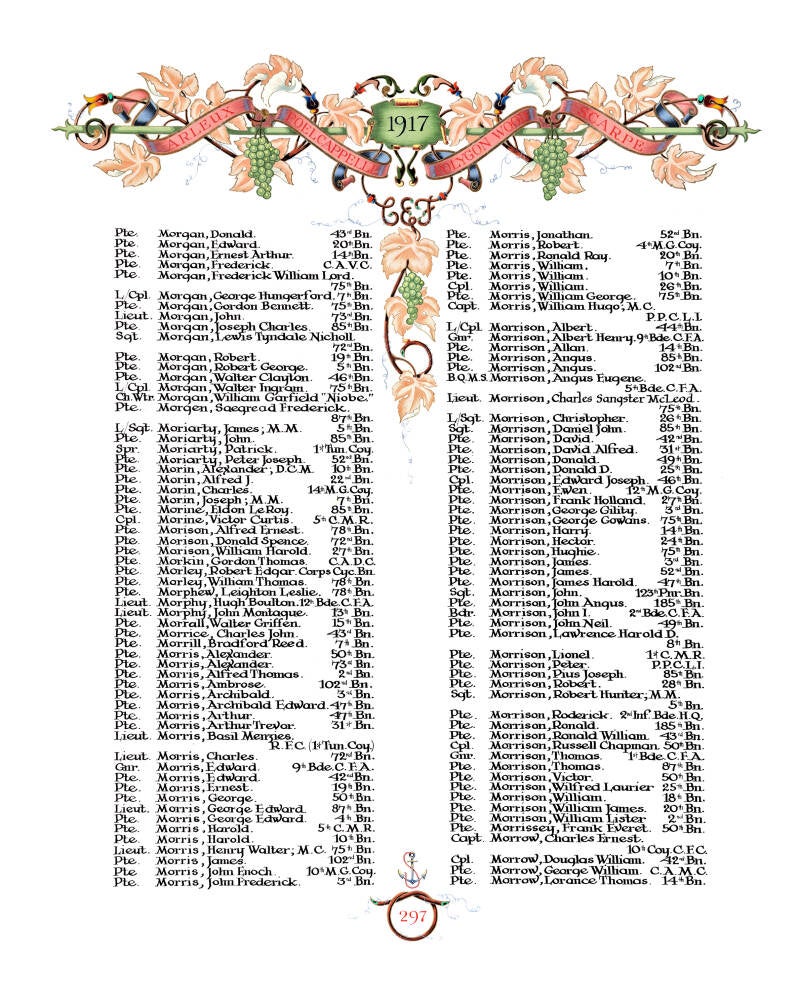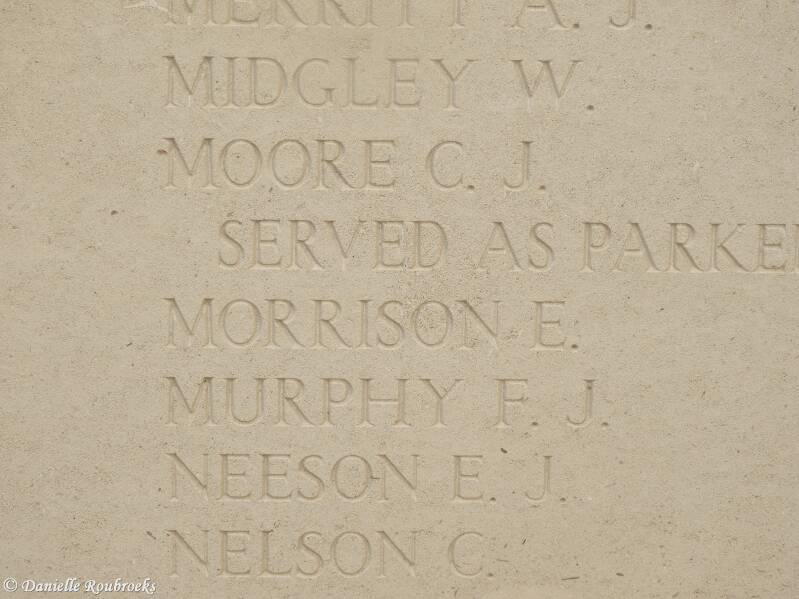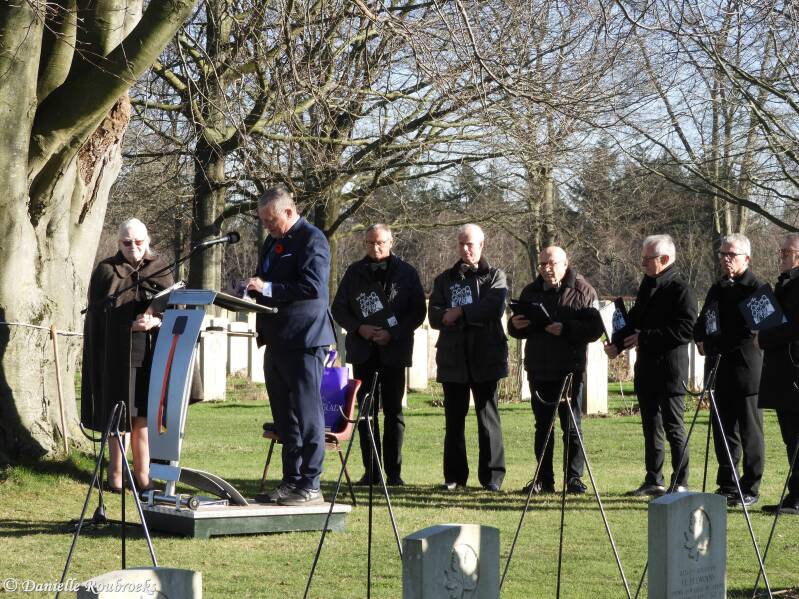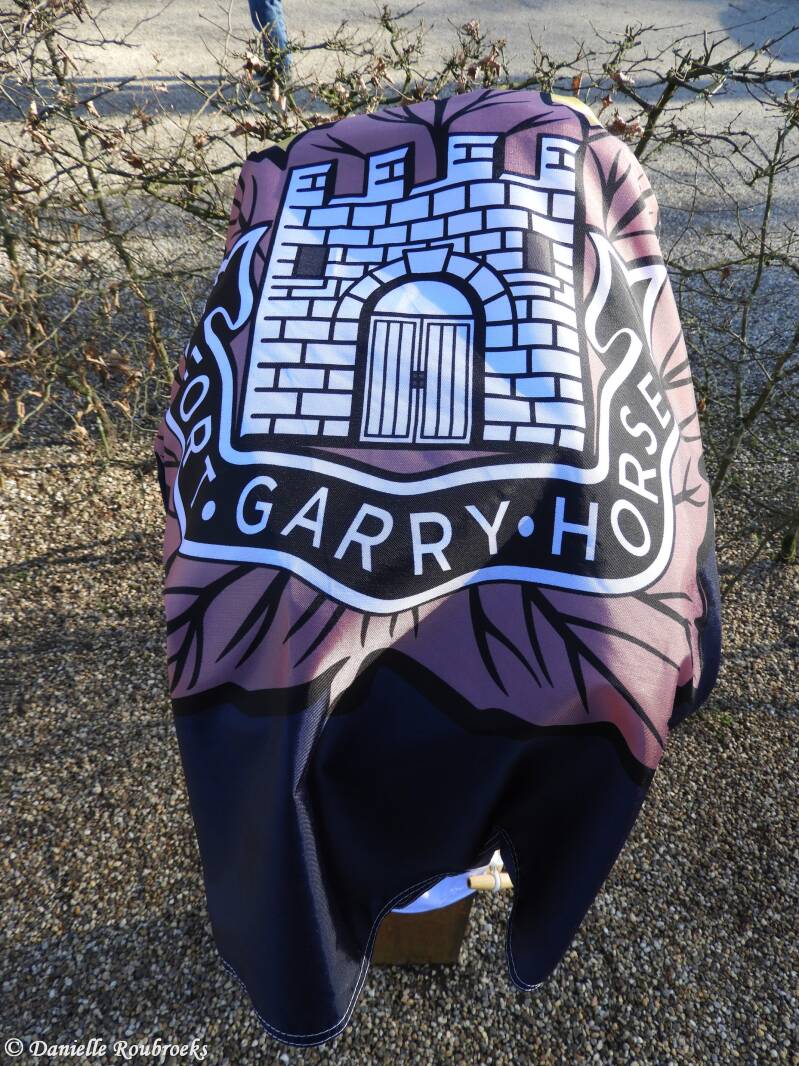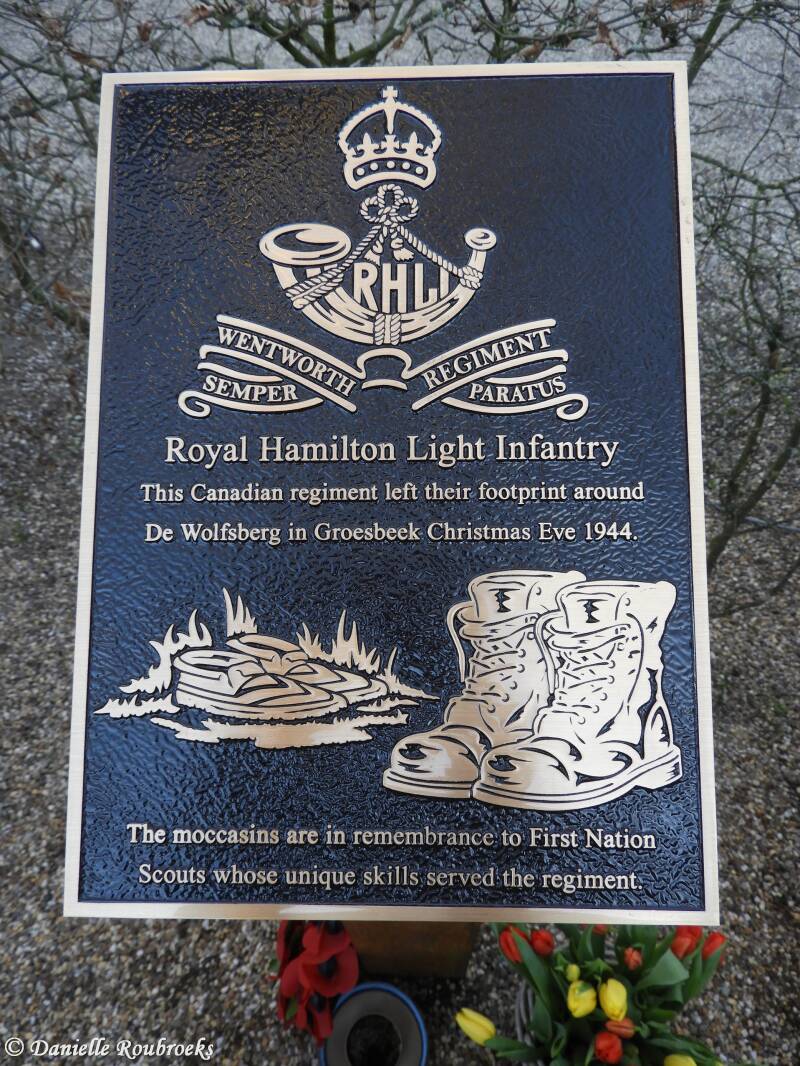Remembrance ceremony "Operation Veritable"
Wednesday 8th February 2023 - Groesbeek, Canadian War Cemetery; Remembrance ceremony "Operation Veritable"
History (Source: Wikipedia)
Operation Veritable (also known as the Battle of the Reichswald) was the northern part of an Allied pincer movement that took place between 8 February and 11 March 1945 during the final stages of the Second World War. The operation was conducted by Field Marshal Bernard Montgomery's Anglo-Canadian 21st Army Group, primarily consisting of the First Canadian Army under Lieutenant-General Harry Crerar and the British XXX Corps under Lieutenant-General Brian Horrocks. The U.S. Ninth Army was incorporated into the 21st Army Group. The objective of the operation was to clear German forces from the area between the Rhine and Maas rivers, east of the German/Dutch frontier, in the Rhineland. It was part of General Dwight D. Eisenhower's "broad front" strategy to occupy the entire west bank of the Rhine before its crossing. Veritable (originally called Valediction) had been planned for execution in early January, 1945 when the ground had been frozen and thus more advantageous to the Allies. The Allied expectation was that the northern end of the Siegfried Line was less well defended than elsewhere and an outflanking movement around the line was possible and would allow an early assault against the industrial Ruhr region.
The operation had complications. First, the heavily forested terrain, squeezed between the Rhine and Maas rivers, reduced Anglo-Canadian advantages in manpower and armour; the situation was exacerbated by soft ground which had thawed after the winter and also by the deliberate flooding of the adjacent Rhine flood plain. Second, Veritable was the northern arm of a pincer movement. The southern pincer arm, Operation Grenade, by Lieutenant General William Hood Simpson's U.S. Ninth Army, had had to be postponed for two weeks when the Germans released the waters from the Roer dams and river levels rose. No military actions could proceed across the Roer until the water subsided.
Veritable started on schedule, with XXX Corps advancing through the forest and the 3rd Canadian Infantry Division, in amphibious vehicles, clearing enemy positions in the drowned Rhine flood plain. The Allied advance proceeded more slowly than expected and at greater cost. The delay to Grenade had allowed German forces to be concentrated against the Anglo-Canadian advance and the local German commander, Alfred Schlemm acting against the assessments of his superiors, had strengthened the Siegfried Line defences and had fresh, elite troops readily available to him. The fighting was hard, but the Allied advance continued. On 22 February, once clear of the Reichswald (German: Imperial Forest), and with the towns of Kleve and Goch in their control, the offensive was renewed as Operation Blockbuster and linked up with the U.S. Ninth Army near Geldern on 4 March.[2] Fighting continued as the Germans sought to retain a bridgehead on the west bank of the Rhine at Wesel and evacuate as many men and as much equipment as possible. Finally, on 10 March, the German withdrawal ended and the last bridges were destroyed.
After the war, General Dwight D. Eisenhower, the Allied Supreme Commander, commented this "was some of the fiercest fighting of the whole war" and "a bitter slugging match in which the enemy had to be forced back yard by yard". Montgomery, the 21st Army Group commander, wrote "the enemy parachute troops fought with a fanaticism un-excelled at any time in the war" and "the volume of fire from enemy weapons was the heaviest which had so far been met by British troops in the campaign.
During the Second World War, there were a number of indigenous soldiers active in every Canadian regiment. Because of their enormous connection to nature, they often played the role of scout. Their movements and mutual communications went unnoticed by the enemy. Despite their courage and ability, even within their own unit, they were often discriminated against because of their origins.
The Groesbeek Airborne Friends Foundation is organizing two events related to the theme 'Indigenous soldiers' on Wednesday 8 February. The annual Operation Veritable commemoration and unveiling of a plaque commemorating the Canadian and Native soldiers of the Royal Hamilton Light Infantry Regiment. As far as we know now for the first time in the Netherlands.
Canadian soldier Ewen Morrison served 22 months in the Royal Hamilton Light Infantry Regiment and developed a deep friendship with his native buddy. A friendship that lasted until their death and is now remembered by Janet, Ewen's daughter.
The Hawk and the Hare is inspired by the real-life experience of the author's father. Based on war diaries and official regimental records.
The father of Ewen was killed in the Battle of Passchendaele and now memorialised at the Menin Gate Memorial Panel 32
Private Ewen MORRISON - 255999
12th Coy. Canadian Machine Gun Corps
Died 13 November 1917


